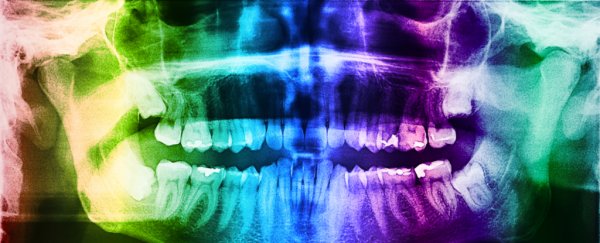People who get chronic migraines might not think there's anything worse than the debilitating attacks – but it turns out that many of the afflicted could be experiencing a double whammy.
New research has found a link between chronic migraines and a common jaw condition called temporomandibular disorder (TMD), and scientists think the disorder could increase the severity and frequency of migraine attacks.
"Our study shows that patients with chronic migraine, meaning attacks occurring on more than 15 days per month, are three times as likely to report more severe symptoms of TMD than patients with episodic migraine," says one of the researchers, Lidiane Florencio from the University of São Paulo in Brazil.
The temporomandibular joint connects the jaw to the skull on either side of the face, and up to 30 percent of the adult population are thought to experience some degree of pain related to the joint's movement and function, collectively called TMD.
Symptoms falling under the TMD umbrella include joint pain, reduced jaw movement, clicking or popping of the joint, and also muscle pain and fatigue, extending as far as the neck.
While TMD is thought to be primarily related to stress and muscle overload, researchers have also previously looked at associations between the temporomandibular joint and migraines.
Now, for the first time, Florencio's team have investigated the link between TMD and chronic migraines.
As opposed to patients who get episodic migraines (occurring less than 15 times monthly), chronic migraineurs experience attacks at least every other day over a three-month period.
Florencio and fellow researchers studied 84 women in their early to mid-thirties – 21 being chronic migraine patients, 31 experiencing episodic migraines, and 32 with no history of migraine.
Among the cohort, TMD symptoms were observed in just over half (54 percent) of the control participants, but in episodic and chronic migraineurs, this figure jumped to 80 percent and 100 percent respectively.
According to the team, the ties between migraines and TMD could relate to nerve endings called nociceptors that process pain in response to dangerous or noxious stimuli.
"The repetition of migraine attacks may increase sensitivity to pain," Florencio explains.
"On the other hand, TMD can be considered a potential perpetuating factor for migraine because it acts as a constant nociceptive input that contributes to maintaining central sensitisation and abnormal pain processes."
But while migraine patients are more likely to have signs and symptoms of TMD – at least, going off this study's relatively small Brazil-based sample, that is – the TMD condition itself doesn't seem to predict who gets migraines, but the team thinks it may increase the frequency and severity of attacks.
"We do know migraine isn't caused by TMD," Florencio says.
"Migraine is a neurological disease with multifactorial causes, whereas TMD, like cervicalgia – neck pain – and other musculoskeletal disorders, is a series of factors that intensify the sensitivity of migraine sufferers."
To fully understand the causal mechanism at play here will fall to future research, but for now, the researchers say their work will help clinicians treat patients with migraines, in terms of looking out for any signs of TMD that could worsen their migraine pain.
In the meantime, if you're one of those affected by these terrible attacks, scientists say you may want to take a look at your diet: and we really hope you don't like chocolate or wine.
We may not have all the answers on how to beat migraines just yet, but there's lot of simple things you can try.
The findings are reported in the Journal of Manipulative and Physiological Therapeutics.
